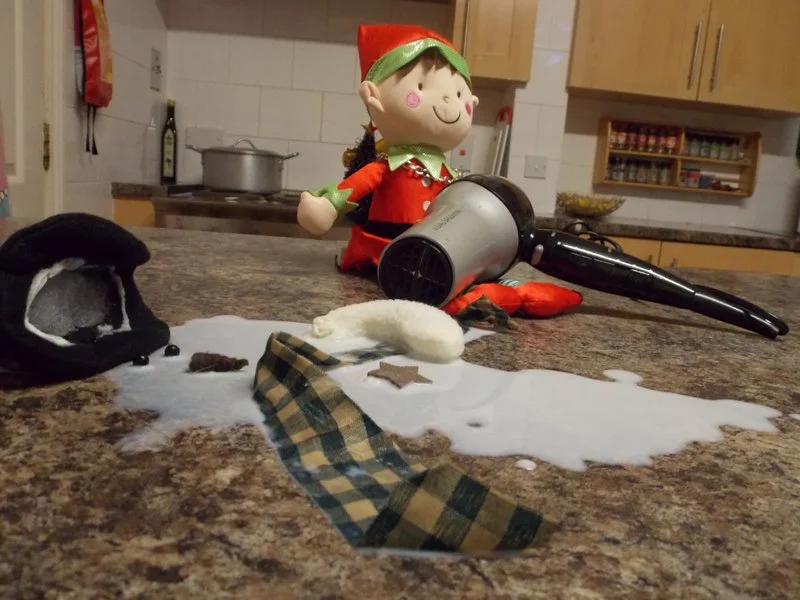Using elf on the shelf to build speech and language skills
If you want to know how to use the Elf on a Shelf to target speech and language skills, you’re in the right place! Whether you’re a fan or not, The Elf on a Shelf is an exciting experience for most young children. It only happens for a short period of time, making it even more motivating for them to talk about.
I’d suggest picking some language to focus on during the month and then thinking of ways you can use the elf to support this language. For example you might want to work on prepositions and elf could be on/ under/ in/ next to different things each day. This way you will provide lots of repetition of language for your child to support the language ‘sticking’.
Teach verbs (action words)
Elf on the shelf is an easy and engaging way to work on verbs with your child. You can teach first verbs such as eating, drinking, sleeping, jumping, washing. Or if your child can already use them introduce new ones such as as baking, cutting, mixing, fishing, kicking, throwing, dancing, driving.
Teach Prepositions
Elf on the shelf is a great opportunity to work on prepositions with your child if they can’t yet use or understand them e.g. under, on, in, next to, behind.
You could hide your elf ON the Christmas tree, or UNDER a chair, or ON TOP of a Lego tower! You could even hide him IN a container and discuss that he is stuck! The options are endless.
Teach body parts
Naughty elf could have been playing and got stickers stuck all over himself. Talk about where the stars are e.g. on his head, on his nose, on his arm. If your child knows common body part vocabulary, you could introduce some trickier words e.g. on his elbow/chin.
On other days you could also have plasters or bandages on different body parts where he has hurt himself doing something silly. Or he could be hanging somewhere silly from his arms/legs.
Build Prediction Skills
Ask your child questions that get them thinking and problem solving. ‘Why’ do they think the elf melted the snowman or ‘how’ did the snowman melt. You can also get them to predict about the future and try to guess what they think Elf be doing the next day. Setting the elf up in more detailed scenes allows for you to model and support your child to use their story telling skills involving predictions and problem solving!




